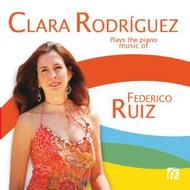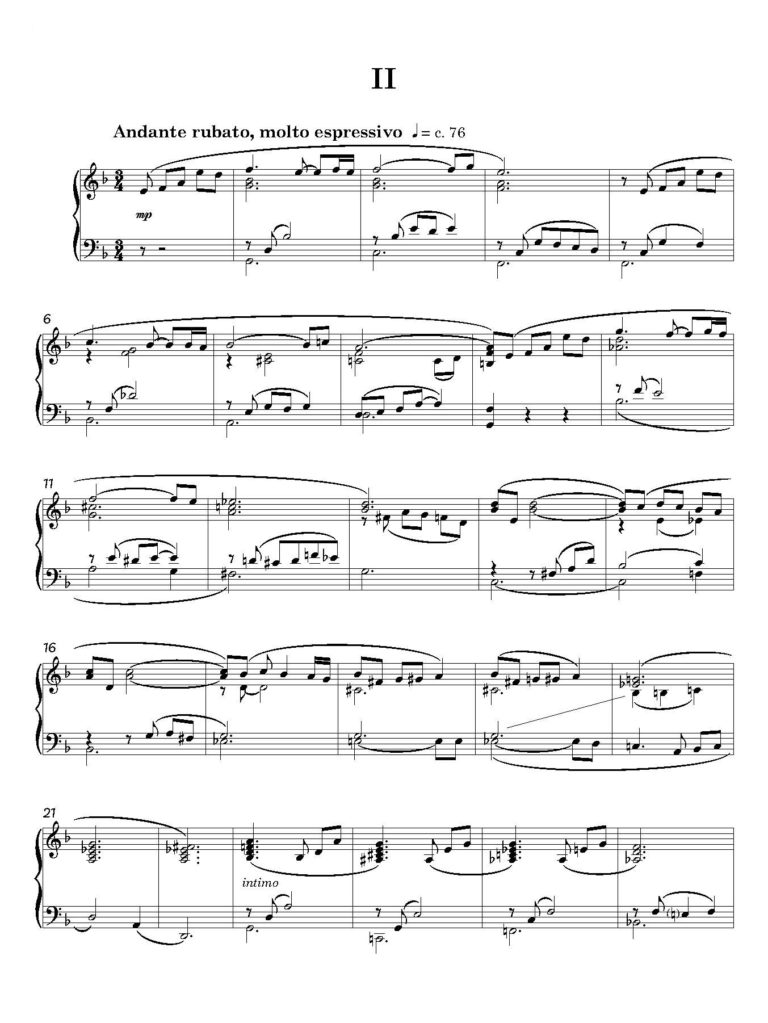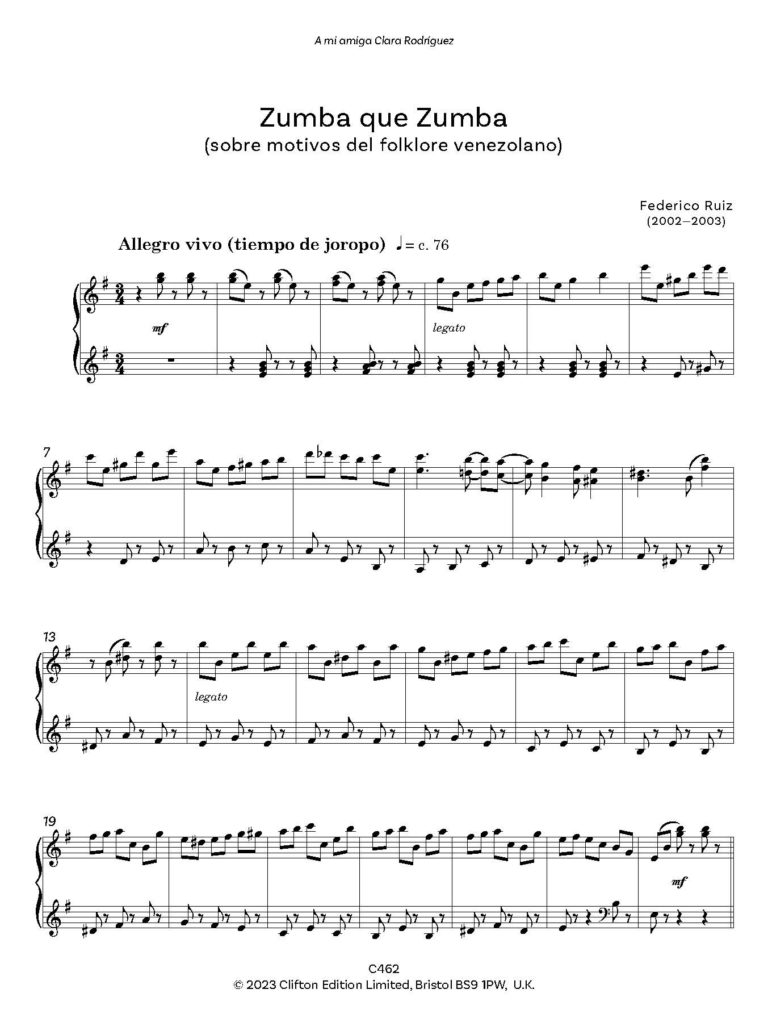Federico Ruiz finds constant inspiration in the rich popular and folkloric music of his country, the very thing that first attracted me to his compositions. We met in 1992 and I became acquainted not only with his music, but, through it, discovered the precision and the soft expressiveness of each of the numerous rhythms of Latin America and the Caribbean.
His music is a sophisticated synthesis of Latin American styles that, amongst many other traits, expresses the subtle interface between ‘classical’ and ‘popular’ music of the continent.
For me it was clear that having a work in the form of a sonata with several movements would be very important for the piano international repertoire and I remember the great excitement of seeing the development and final creation of what the “Tríptico Tropical” (Tropical Triptych) is today, in its three fabulous movements which I had the pleasure of premièring at the Southbank Centre in London in my first recital in such a prestigious cultural hub in 1993.
The critic of the Independent newspaper, Robert Maycock, described it as: “Irresistible” referring to the dance style of many of the rhythms present there as well as the charm of the music.
Tríptico Tropical is perhaps one of the very few concert pieces that combine elements of Afro-Latin music with the shape of classical European sonata form.
The first movement marked Moderato, molto expressivo flows in one lyrical breath bringing together influences from jazz, afro-Venezuelan rhythms, and Venezuelan melodic gestures. It combines expressiveness and subtle rhythmical figures in its clearly identified first and second subjects.
The Andante evokes a slow waltz and the mood of a bolero, the romantic type of ballade from Central America and Caribbean countries, a Latino-Caribbean love song.
The Allegro vivo, which is in rondo form, takes in its stride the sensuality, and the euphoric qualities of the calypso, mixing conga and salsa rhythms with the essence of North American spiritual, it is a great festive celebration of the American continent. This work must be played avoiding excessive amounts of rubato even if the material could tempt the performer to be self-indulgent. It would sound wrong and in bad taste. Rhythmical rigour and beauty of tone are of the utmost importance.
The “Merengue” was born out of my curiosity of asking Federico Ruiz about the possibility of him writing a dance such as his own band piece called Danza Festiva. He was very amused at the thought of quoting himself on a new piece! The resulting Merengue is a concert work of great dimensions, based on the traditional rhythm of that national dance.
The Venezuelan merengue has the distinctive characteristic of being in five beats per bar, it may have stemmed from Spanish dances such as the zorcico. From the 19th century we find recollections of its presence in the musical life of Venezuela, and particularly as music for dancing and for celebrations. It has constantly evolved and is still a source of inspiration for contemporary composers both popular and classical. The accents are not always found on the same beat of the bar, they are free to move depending on the actual composition. In Venezuelan music racial elements are entwined in the most wonderful way; the indigenous, the Black and the White characteristics, if analysed could be separated, but the most important thing is the result — the mixture — of all those elements.
The Joropo is the national dance of Venezuela; it has its origins in the ancient Iberian music from the 17th and 18th Centuries, such as the fandango, jotas and malagueñas. These developed with the influence of centuries of Arabic occupation and then got transformed in Venezuela by the mixing of African and indigenous cultural elements in the Orinoco Basin and its savannas. It is a vigorous, virtuoso experience involving singers, instrumentalists, and dancers; it consists of strongly accented rhythms and often makes use of hemiola but unlike the other Venezuelan dances, no single rhythmic pattern is associated with it. The basic instrumentation of the joropo is the Venezuelan harp, the cuatro and the maracas. In the case of the piano versions, we can speculate that we can imitate the sound of the harp or the harpsichord, since the Baroque influence is strong. I think that once you discover the richness of the dance you will be fascinated by its incredible speed and rhythmic vitality.
The ‘Zumba que Zumba’ was written between 2002 and 2003; it is based on folk motives, using as a reference the pattern of the zumba que zumba type of joropo, which has a particular harmonic sequence on which variations are created. Very good articulation, steely fingers and a strong sense of pulse are necessary to perform this kaleidoscopic piece. He kindly dedicated it to me, and I have had the pleasure of performing it world-wide. It is part of the repertoire that I recorded on my “Venezuela” CD Nimbus Records.






